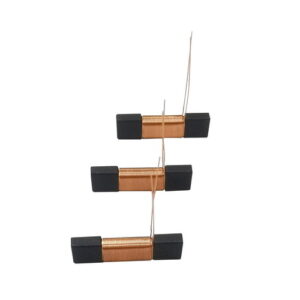Reading pen coils mainly utilize the principle of electromagnetic induction to transfer energy through coil coupling. During system operation, the input terminal converts the AC power from the communication power supply into DC using a full-bridge rectifier circuit or directly supplies power to the system through a 24V DC terminal.

The DC output from the reading pen coil passes through the power management module and is converted into high-frequency communication electricity through a 2M active crystal oscillator inverter, which is then provided to the primary winding. After energy storage in the two magnetic rods, the current output from the secondary coil is converted into DC through a voltage withstand conversion circuit to charge the battery. Therefore, the quality of the reading pen coil plays a crucial role in wireless chargers and directly determines their quality.
Among various types of inductors, reading pen coils are widely used. Many people are concerned about how to measure the quality of bar-shaped inductors, but it is a highly specialized question. It can be approached from two aspects: evaluating the appearance and measuring the physical parameters.

- Measurement of physical parameters:
The measurement of the physical properties of reading pen coils is more specialized, as this information can only be obtained through professional testing using instrument equipment. Generally, the measurement of physical parameters includes current, resistance, impedance, and inductance. In fact, the main specialized instrument equipment for measuring physical properties is relatively simple.
- Appearance measurement:
The evaluation of the appearance of reading pen coils mainly focuses on whether the packaging dimensions are correct and whether other related physical appearances meet the requirements, such as pin length, bending radius, etc.
The above two methods are commonly used testing methods for reading pen coils. If there are more specialized instruments available, more professional evaluations can be conducted, such as testing the decrease in interference capability at the same or different frequencies. Inductors need to undergo strict testing before use, as any issues in the circuit can have a significant impact.